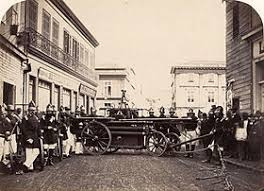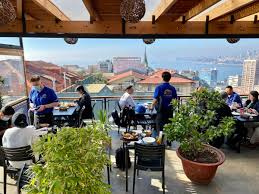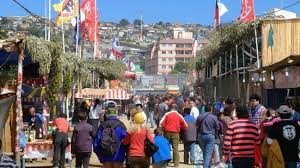How is the conservation of historical sites managed in Valparaíso?

How is the conservation of historical sites managed in Valparaíso?
How is the conservation of historical sites managed in Valparaíso? Valparaíso, Chile’s iconic port city, is renowned for its vibrant culture, unique architecture, and rich maritime history.
As a UNESCO World Heritage Site, the conservation of Valparaíso’s historical sites is of great importance.
The city’s steep hills, colorful houses, and historical buildings are integral parts of its identity, but they face challenges due to urbanization, climate change, and the effects of natural wear over time.
Here’s a deeper look at how conservation is managed and what challenges are faced in preserving these treasures.
UNESCO World Heritage Status
In 2003, Valparaíso was designated as a UNESCO World Heritage Site for its outstanding universal value. This recognition brought international attention to the city’s historic neighborhoods and urban landscape.
The UNESCO designation helps ensure that preservation efforts are prioritized and that Valparaíso’s distinctive architecture remains intact for future generations.
The status brings with it both funding and legal protection, but also high expectations for sustainable management.
The World Heritage status has bolstered local and international efforts to protect the city’s cultural heritage, yet it has also required balancing urban development with the need for conservation.
Local Government’s Role in Conservation
The Municipality of Valparaíso plays a central role in managing the conservation of historical sites, working in tandem with national heritage bodies such as the National Monuments Council (Consejo de Monumentos Nacionales).
The local government enforces regulations related to building codes, land use, and heritage protection. For instance, there are strict rules about renovating or altering buildings in the heritage zones to maintain the historical integrity of the city.
Urban development projects in these areas are carefully regulated to avoid the destruction of historic structures or the disruption of architectural coherence.
In many cases, the conservation law mandates that any alterations maintain the original style and materials.
Restoration Projects and Challenges
Conservation in Valparaíso often involves restoration projects to repair and preserve dilapidated buildings.
Many of the city’s old wooden houses, colonial-era churches, and public buildings require constant attention due to their age and exposure to the harsh coastal climate.
Efforts to restore these structures are managed by heritage experts and local artisans who use traditional methods to ensure the authenticity of the restoration.
However, funding for these projects can be limited, and private investment is sometimes necessary to complete the work.
One of the main challenges in restoration is the weather conditions, as the salty air from the Pacific Ocean can deteriorate buildings, leading to wood rot, rust, and paint damage. This makes ongoing maintenance crucial.
Private and Community Involvement
In addition to the government’s efforts, local communities and private individuals play a vital role in preserving Valparaíso’s historical sites.
Many residents and business owners actively participate in preservation efforts by maintaining their properties and upholding the city’s aesthetic standards.
For instance, owners of historic buildings are encouraged to restore their properties to preserve the city’s iconic architectural style.
There are also private organizations and nonprofits that focus on promoting cultural heritage, often funding or supporting projects to restore public spaces or important landmarks.
Community-driven initiatives, such as artistic murals, are another example of how locals contribute to the preservation of the city’s unique cultural identity.
These projects often revitalize neighborhoods while respecting historical preservation guidelines.
Balancing Urbanization and Conservation
One of the most significant challenges facing the conservation of historical sites in Valparaíso is the balance between urbanization and heritage preservation.
As the city grows and modernizes, there is a risk of overshadowing or even destroying historically significant areas in favor of new developments.
The central question is: How can the city evolve while protecting its historic fabric? This is a delicate issue because, while modernization and gentrification can bring economic growth, they may also lead to the loss of Valparaíso’s authenticity.
To address this, urban planners have worked to integrate modern infrastructure into heritage areas while maintaining the integrity of historical zones.
For example, new construction in the city often includes the restoration of facades or the use of historical building materials.
Tourism and the Impact on Preservation
Tourism is both a benefit and a challenge for the conservation of Valparaíso’s historical sites. On one hand, the city’s popularity as a tourist destination brings in revenue and helps fund preservation projects.
On the other hand, the high volume of visitors can lead to wear and tear on the city’s buildings, especially in areas with high foot traffic, such as Cerro Alegre and Cerro Concepción.
The footpaths, funiculars, and even street art can be damaged by tourists’ enthusiasm and neglect.
The city has introduced measures to mitigate these effects, including educating visitors about the importance of heritage preservation and encouraging responsible tourism.
The promotion of sustainable tourism practices ensures that Valparaíso remains a living city that can be enjoyed for years to come.
Street Art and Its Preservation
Valparaíso is known for its street art, which has become one of its defining characteristics. The murals, graffiti, and urban art on the city’s walls are not only aesthetically significant but also play a role in the cultural identity of the city.
However, preserving this street art can be tricky. Many of the murals are painted directly on buildings, and over time, they are subject to fading or damage from the elements. Despite this, the city has made efforts to protect the most important pieces.
In some cases, murals have been repainted or restored by the original artists. Community organizations also work to highlight and preserve the role of street art in Valparaíso’s culture, often involving local artists in these projects.
Future of Valparaíso’s Historical Conservation
Looking forward, the challenge of conserving Valparaíso’s historical sites remains. The city faces the constant pressures of development, climate change, and the demands of modern life.
Balancing growth with conservation requires ongoing collaboration between local authorities, community groups, and heritage experts.
Future efforts will likely involve innovative approaches to conservation, such as the use of sustainable building practices and the integration of modern technology to monitor the condition of buildings.
Furthermore, community-driven initiatives will continue to be an essential part of keeping the city’s historical heart intact.
The role of tourism and international support will also remain critical in sustaining conservation projects. Valparaíso’s future depends on its ability to embrace both modernity and tradition without sacrificing the historical charm that makes it so unique.
Preserving the Heart of Valparaíso
The conservation of Valparaíso’s historical sites is a complex, ongoing process. It requires a balance between protecting the past and allowing the city to evolve.
Thanks to the city’s UNESCO designation, local efforts, and the involvement of private and community stakeholders, Valparaíso’s heritage is in good hands.
As long as the city’s citizens and visitors continue to value and protect its remarkable heritage, Valparaíso will remain a vibrant, living testament to Chile’s rich cultural history.





Leave a Reply